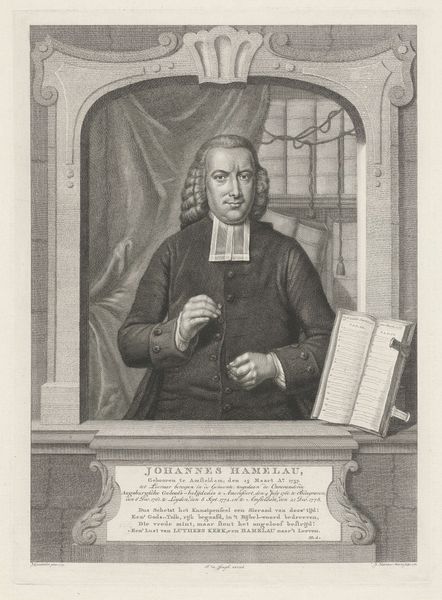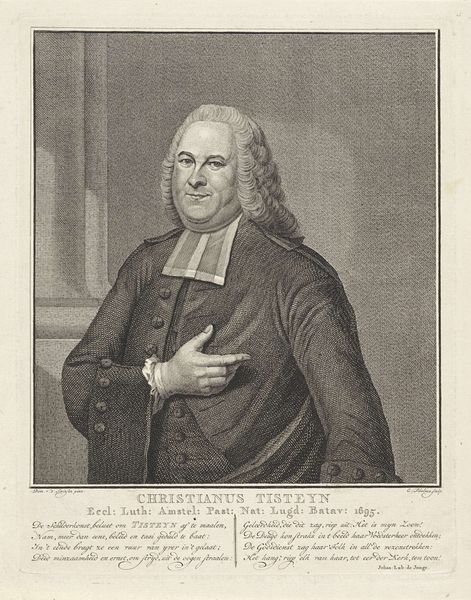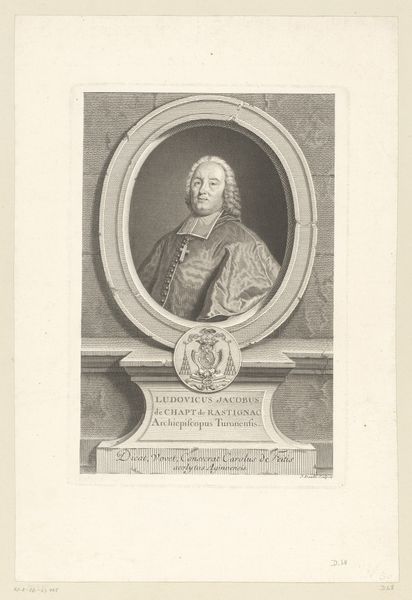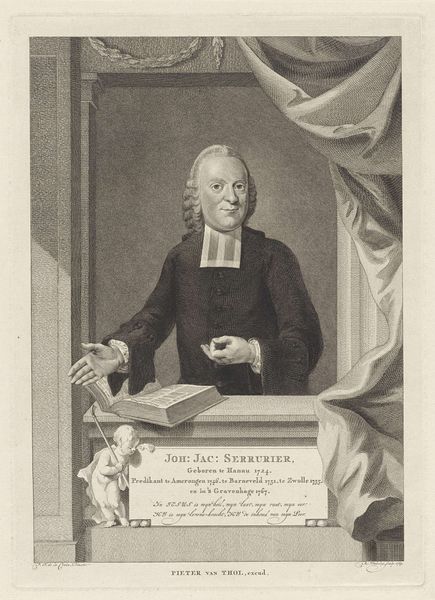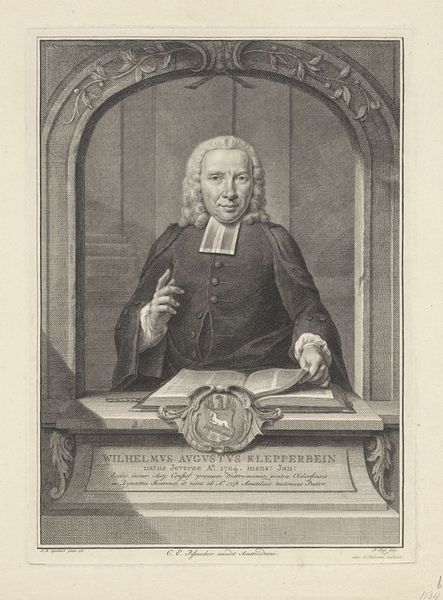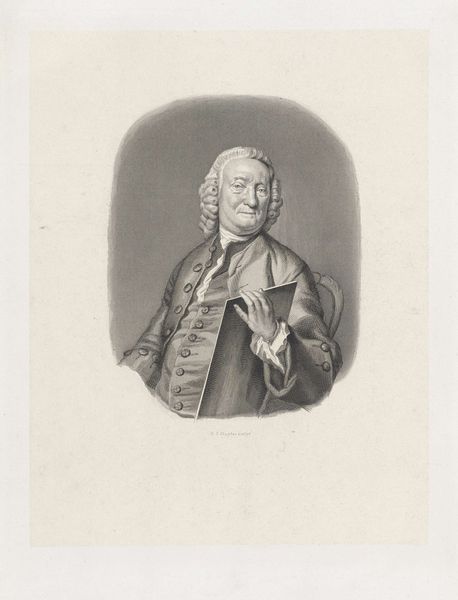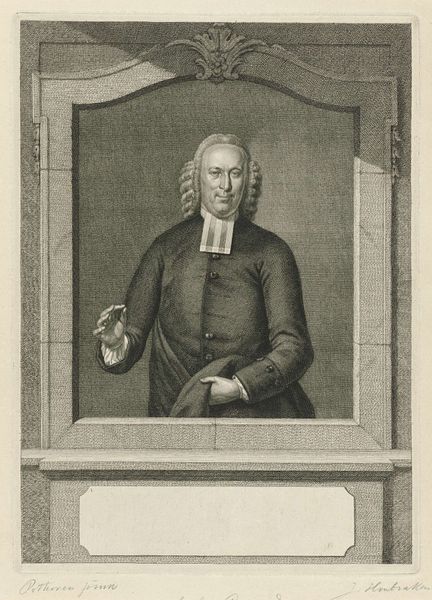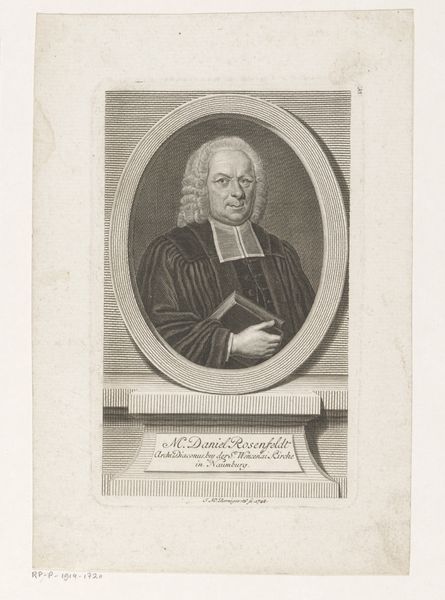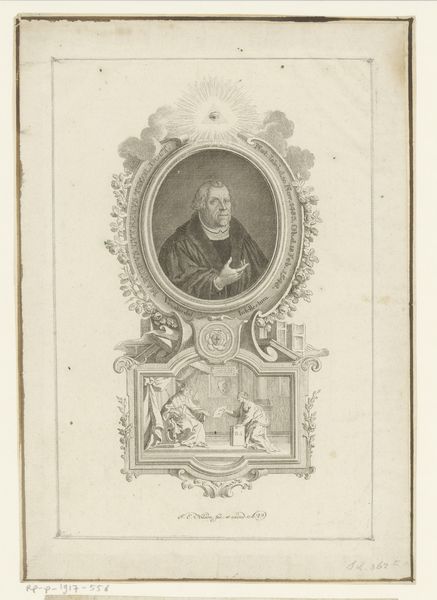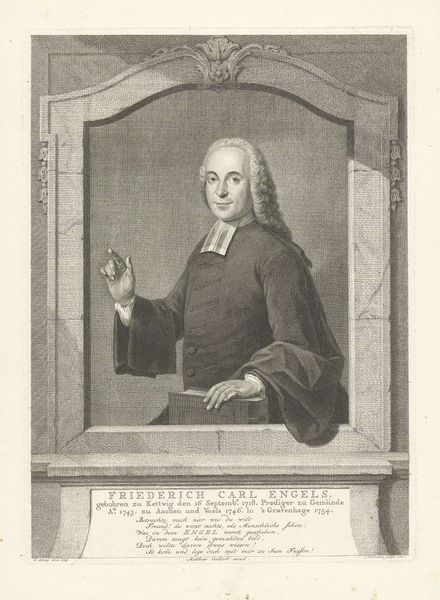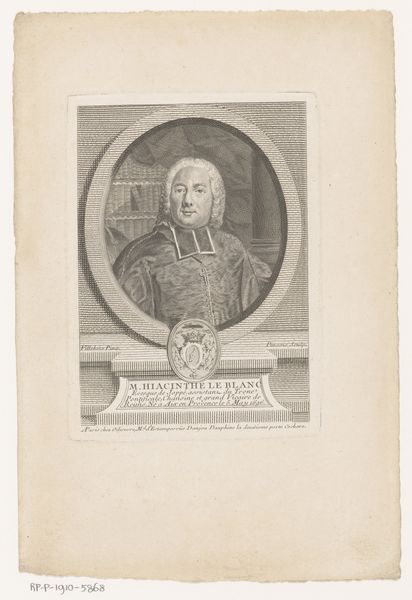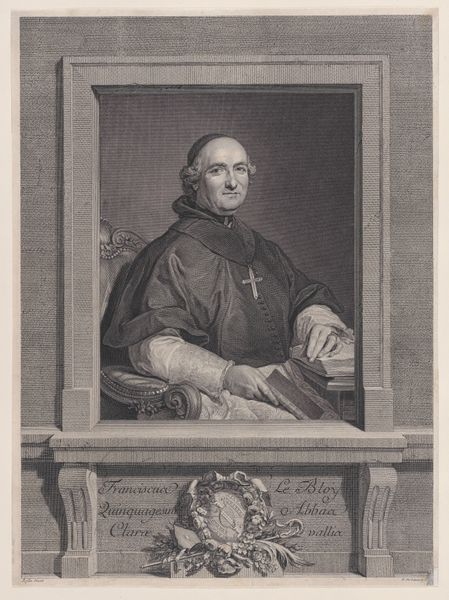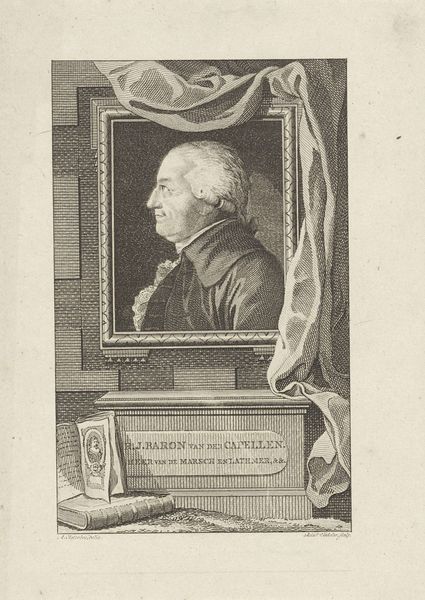
print, engraving
#
portrait
#
baroque
# print
#
old engraving style
#
history-painting
#
engraving
Dimensions: height 362 mm, width 265 mm
Copyright: Rijks Museum: Open Domain
Editor: Here we have Jacob Houbraken's 1760 engraving, a portrait of Christiaan Tisteijn. There's something quite formal and imposing about the way Tisteijn is framed by that architectural detail. How should we interpret this portrait? Curator: This engraving offers insight into the social and intellectual circles of 18th-century Dutch society. Note how Tisteijn is presented almost theatrically, framed by the archway and curtain, elements designed to elevate his status. Consider the role of printmaking during this era: how did engravings like this one shape public perceptions of important figures? Editor: It's interesting that you mention public perception. His pose almost feels staged, but the engraving itself makes it accessible. Was this a common way to disseminate information or project an image? Curator: Precisely. Engravings made portraits available to a wider audience than painted portraits. But consider the inscription below the portrait - do you think it gives insight into how the sitter wanted to be seen? Editor: I notice mentions of his erudition and connection to the Church, but how much control did the sitter actually have over their own image? Curator: That’s a great question, it's complicated. Houbraken, as the engraver, had artistic agency, yet he was likely commissioned, perhaps by Tisteijn himself or an institution seeking to celebrate him. The "officialness" could be the intended function of commissioning such work in the first place. Editor: So the image then is the result of several intentions merging in one product. Thanks, I've never thought about the multiple parties who are involved in the representation of a historical figure. Curator: And in that way, the historical context shapes both the making of the portrait and its reception!
Comments
No comments
Be the first to comment and join the conversation on the ultimate creative platform.
